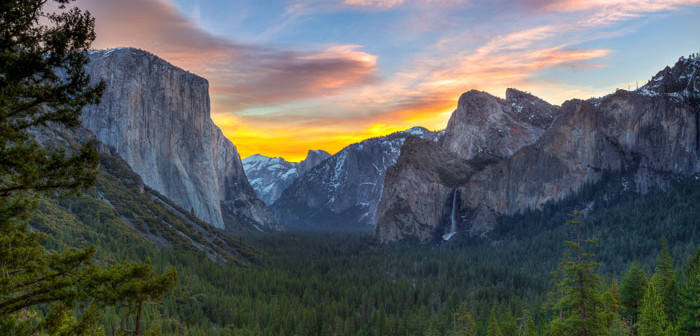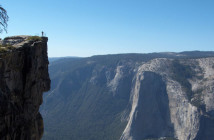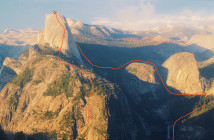Come March 1st, your entrance fee into Yosemite will be a little more than you’re used to. This is the first bump since 1997. This year marks the 125th anniversary of the park – consider the fare hike to be birthday cash.
Yosemite saw a 146,117 visit increase between 2013 and 2014. If those statistics hold, the fare increase should add a significant chunk of change for the park.
Now, a 7-day pass into Yosemite will cost $25-$30 dollars (depending on the season) per car. The annual pass will now rise from $40 to $60 dollars. Overnight camping passes will rise about %20.
“With additional entrance fees, we will be able to complete some critical projects in the next few years that benefit park visitors,” stated Randy Fong, Division Chief of Project Management. “We want everyone to know that 80% of the revenue stays here in Yosemite National Park to make these projects a reality. Without the funding, the projects will simply not get implemented.”
| Type of Fee | Effective 3/1/2015 |
Effective 1/1/2016 |
| Per Vehicle Entrance, 7-day pass | March $25 April – October $30 November – December $25 |
January – March $25 April – October $30 November – December $25 |
| Individual Entrance | $15 | $15 |
| Motorcycle Entrance | $15 per motorcycle | $20 per motorcycle |
| Yosemite National Park Annual Pass | $60 | $60 |
| Family/Group Reservation Campsites | Range: $26 – $50 | Range: $26 – $50 |
| First-Come, First-Serve Available Campsites | Range: $6 – $18 | Range: $6 – $18 |
The NPS put together a ‘Entrance and Camping Fee Increase FAQ‘. See it below:
Why does it cost less to visit the park in the winter than in the summer?
The park is experimenting with a slightly lower entrance fee of $25 to encourage more
visitors to experience the park during the winter months.
Why are the rates different from the ones that were proposed during the public
comment period?
During the 30-day public comment period, the park received over 3,000 comments, with a
majority of the comments expressing support for the fee increase. The new fee structure
includes changes to the park’s original proposal that were made in order to respond to the
needs and requests of the public. The winter rates and the phased-in motorcycle rate were
both developed in response to public comments.
Why is Yosemite National Park raising the entrance fee?
This fee increase is part of a larger National Park Service initiative to standardize fees in
similar parks across the country. Yosemite National Park was classified with parks of
comparable size and visitation and given the corresponding fee schedule. Yosemite’s
previous entrance fees have been in place since 1997, when a seven-day pass was increased
from $5 to $20 per vehicle. According to the U.S. Bureau of labor and Statistics, $20 in 1997
is equivalent to $29.64 in 2014. This fee change allows Yosemite to maintain consistent
revenue while adjusting accordingly for inflation.
How were the entrance fees calculated?
The NPS fee structure is a tiered approach that classifies Yosemite National Park with parks
of comparable size and visitation. The NPS analysis of fees is based on relevant academic
studies, private and public sector benchmarks, and existing NPS data, and seeks to provide
fair, equitable and consistent fees to the public across the National Park System. Yosemite is
part of Group 4, which generally includes larger parks with higher operating costs due to
high levels of visitation and infrastructure, such as Grand Canyon, Sequoia, Kings Canyon,
and Yellowstone.
What do the fees pay for?
The Federal Lands Recreation Enhancement Act (FLREA) of 2005 authorized 100% of the
revenue generated by charging fees to be returned to the National Park Service, with 80%
remaining at the site where it is collected and 20% to be used servicewide to fund programs
and parks that don’t collect fees. These funds are to be used in the park for projects that
directly benefit visitors. Funds generated by the fees are used to accomplish projects the
park has been unable to fund through annual Congressional allocations. Examples of recent
park projects funded with fee revenue include projects to reconfigure Yosemite’s South
Entrance Station, upgrade the water system that serves the Crane Flat Campground, and to
improve accessibility by providing an American Sign Language interpreter and converting
campsites into accessible sites.
What will the increased revenue be used for?
Forecasted revenue from proposed entrance fee increases is approximately $4–5 million
annually. The new revenue from the fee increases will be used to provide enhanced visitor
services such as expanded campgrounds, improved parking, meadow and river
restoration,emergency services, parkwide accessibility projects, and expanded education
programs for youth. Fee revenue will also be used to provide enhanced shuttle service in
Yosemite Valley and from adjacent communities.
Are commercial fees changing?
Commercial fees are not changing at this time.



![Yosemite’s Dawn Wall Ascent – [UPDATED] What you need to know kevin_tommy](/wp-content/uploads/kevin_tommy-214x140.jpg)